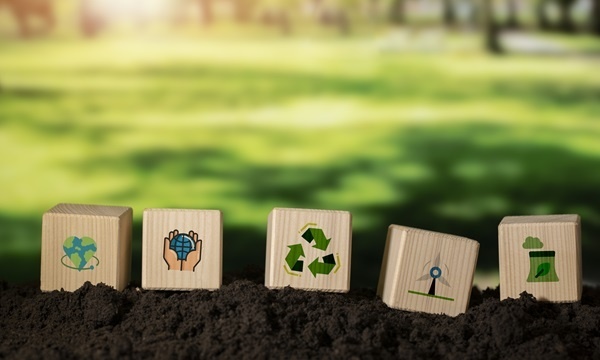Climate change has left an indelible impact on the planet, causing droughts and water scarcity while subjecting 1.81 billion people to a “significant flood risk.”
Take Queensland as an example. In the past decade, the region has experienced extreme climate situations. Tropical Cyclone Tasha wreaked havoc in the Australian state in 2010-11, resulting in heavy rainfall, flooding, deaths and displacements, following which the region faced an eight-year-long drought. These led to formulating adaptive policy responses to both drought and flood in Southeast Queensland.
The World Health Organization (WHO) data shows that of all documented natural disasters in the last decade, 80-90% have resulted from floods, droughts, tropical cyclones, heat waves and severe storms. According to a statement by the United Nations Development Program, the risk of coastal flooding will increase fivefold this century.
WHO predicts that by 2030 as many as 700 million people will be at risk of being displaced because of drought. With water scarcity impacting 40% of the world’s population, an estimated 55 million people globally are affected by droughts every year.
Emerging technologies, especially AI, can be used to predict and mitigate potential risks to help vulnerable people and to roll out better water management practices. Today, the use of AI is not only helping people with flood alerts and real-time crisis management data, but is also making organizations use water sustainably and responsibly.
For example, 7Analytics offers businesses and local authorities real-time flood predictions in Norway’s Bergen. The team of scientists and geologists uses hydrology, geology and data science to develop high-precision risk tools and let people know which areas are particularly at risk of flood damage. 7Analytics studies not just the weather, but also the geography of the region and its drainage capacity. This help Norwegians plan for imminent and future impacts of climate change.
“We can actually predict what flooding will happen, based on the weather forecasts, up to seven days in advanceand it’s down to the very finest grain,” Jonas Torland, 7Analytics co-founder, told the BBC. “All of this data considers where the water will flow and where it will create problems. We can tell you that in five days you will have 50 cm of water at your entrance, and we can tell you when it will subside.”
Inundated land often faces the problem of electricity restoration. To solve this problem, London-based Neara uses AI to automate LiDAR insight generation and creates digital flood simulations for the electricity infrastructure industry.
From the actual width of individual cables to what the nearby buildings and vegetation look like, the digital models reflect in hyper-realistic details of all the nuances in an area. These help the power networks to take action to minimize damage and safely restore power post-flood. They can take timely decisions such as which cables to switch off, where to divert power and the exact locations that engineers should be sent to.
While 7Analytics and Neara are chargeable services, Google’s Flood Hub offers free river flood warnings in over 80 countries, starting with India.
“Floods are one of the most devastating natural disasters and impact hundreds of millions of people per year. We really want to let people know before floods actually hit them,” Yossi Matias, VP of engineering and research and crisis response lead at Google, told the BBC. AI can provide predictions in places where there is scarcity of historical data like African countries, he added.
Drought data
The Copernicus Emergency Management Service’s European Drought Observatory and Global Drought Observatory have been combining multiple data to monitor and forecast droughts and heatwaves.
The European Commission also launched the European Drought Observatory for Resilience and Adaptation to improve drought impact and risk assessment. It aims to enhance cooperation between drought observatories in the EU and bring in effective drought management, policy and adaptation review with the help of drought data and AI.
Going beyond flood and drought, AI has been helping in a variety of ways in water cycle management. This is important because 2.2 billion people do not have access to drinking water services, according to a UNICEF 2019 report and 1.42 billion people are exposed to either droughts or increased flooding.
Despite being the Earth’s most abundant natural resource, only about 2% of all water is freshwater. That’s why understanding and prioritizing water sustainability is an urgent priority.
AI-driven analytics for water management
An Australian government organization, responsible for delivering retail water supply and wastewater services in Southeast Queensland, sought to improve its operational efficiency with a modernized infrastructure that facilitated informed decision-making, improved consumer experience, significant cost savings and bring in sustainability.
It partnered with HCLTech to implement a cloud-based, AI-driven intelligent data platform (IDP) that would enable real-time insights and data-driven decision-making. The solution involved migrating to Azure Databricks and using HCLTech’s Sketch framework to streamline and automate the process.
The implementation of the IDP resulted in numerous benefits for the client, including 100% data residency and data sovereignty compliance, five times faster decision-making, 30-40% reduction in development efforts and duration and 20-25% reduction in compute costs.
The solution also improved the customer experience for over three million users, reduced non-revenue water loss and supported environmental sustainability initiatives.
AquaSphere
Earlier last year, HCLTech introduced AquaSphere, a specialized platform that’s using AI to make the most of water cycle management and can track, analyze and report water usage metrics in real time.
AquaSphere enables sustainability managers to implement water conservation measures such as rainwater harvesting and to identify clean water wastage, ensuring cost-effective and environmentally responsible water practices.
“AquaSphere was built on BTP [Business Technology Platform], but the inspiration for this solution came from our chairperson’s big initiative called Aquapreneur, which was launched at the World Economic Forum. This initiative focuses on how to use intelligence to understand the usage of water. The irony is that 70% of the Earth is surrounded by water but we still have water shortage. So, there is abundance on one end, but again, data metrics and the ability to bring those pieces together is extremely critical and important,” said Kalyan Kumar, Global Chief Technology Officer and Head (Ecosystems), HCLTech at SAP TechEd 2023.
“In AquaSphere, we’ve ingested our own sustainability report and infused GenAI capability to build the context, extract responses and make it more usable to users. As the LLM improves and we mix it up with more metrics data, the ability to extract business values and outcomes are going to be extremely crucial,” he added.
AquaSphere empowers organizations to include water in their sustainability goals, enabling businesses to compare their results against set metrics, measure consumption and waste, generate interactive reports backed by accurate statistics and predict water demand by combining economic and social factors with geographic data.
This comprehensive approach aids in further developing strategies to reduce water consumption, improve resource management, monitor water fitness, meet sustainability goals, prevent greenwashing, save money and protect the environment.





